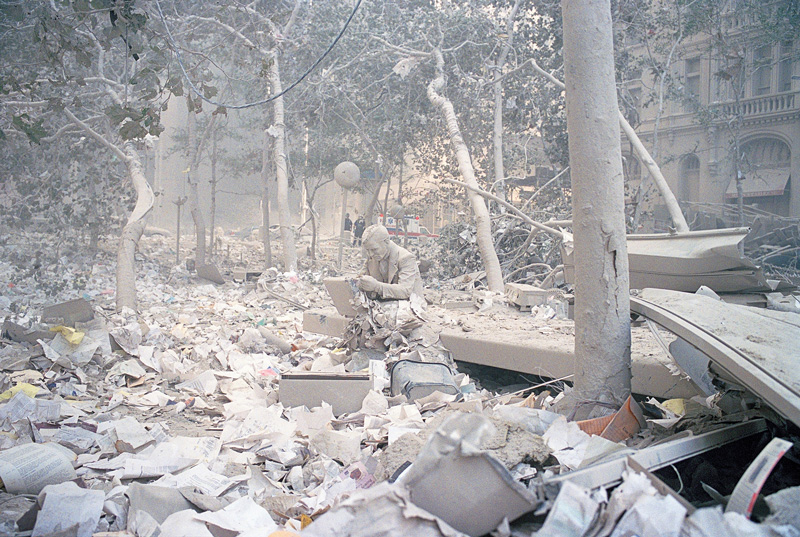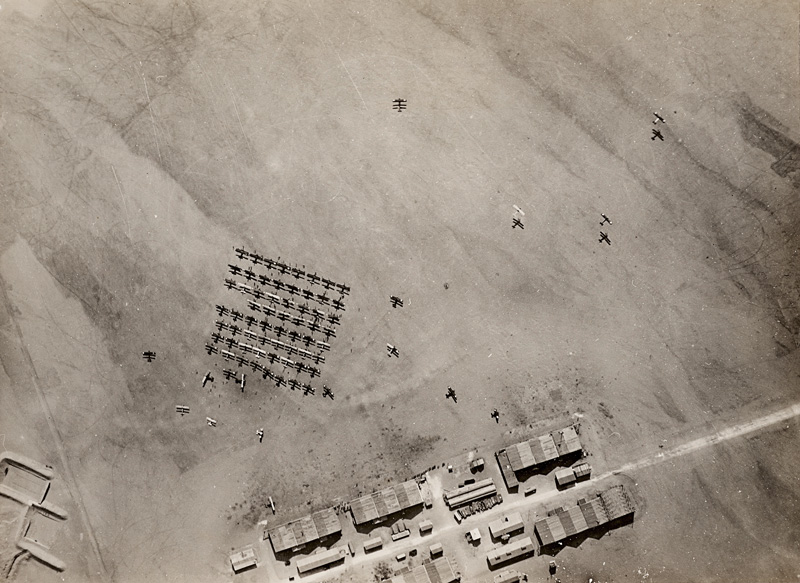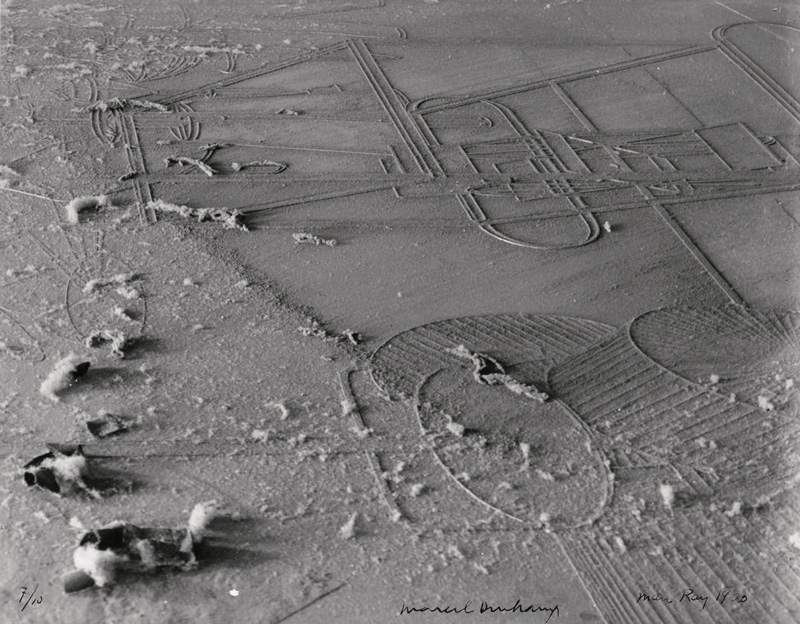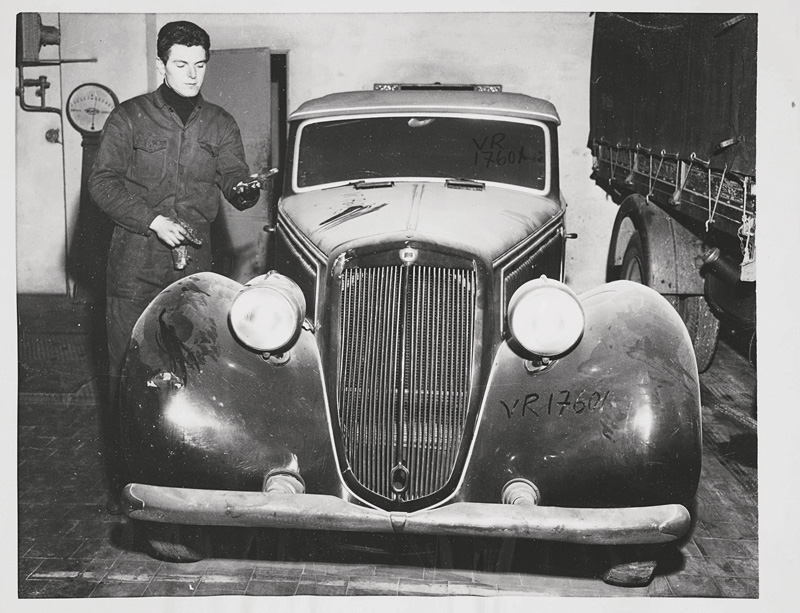[Fall 2017]
Whitechapel Gallery, London
June 7–September 3, 2017
By John K. Grande
Everything vanishes and yet it all remains, changed somehow, interpreted differently: ashes to ashes, dust to dust. A Handful of Dust is a show that has a mysterious point of departure that is as much about the ambiguities of art in photography as it is about the way art fuses, morphs, reinvents conceptions, how it is a process long before and after realization. This point of departure is a photograph taken by Man Ray of a partially completed dust-covered artwork. Each in their own way, the photographs, documents, video, and ephemera in the show follow the initial flow of Man Ray’s picture of a fragment of Marcel Duchamp’s dust-covered La Mariée mise à nu par ses célibataires, même (also known by its English title, The Bride Stripped Bare By Her Bachelors, Even, and as The Large Glass, 1915–23). The incredible range and variety of art grabs one’s attention all the way through this show. Most have some correspondence with that first Man Ray image. The work that Man Ray photographed “appeared like some strange landscape from a bird’s eye view” and it was a “paying job” for Katharine Dreier for her Société Anonyme.1 Man Ray’s photograph, which first appeared in Littérature, a surrealist journal, in 1922, is displayed in a vitrine in the gallery with Duchamp’s Green Box and other surrealist ephemera.
The 1968 reprint on view, co-signed by Marcel Duchamp and Man Ray, has been retitled Élevage de poussière (Dust Breeding). Strangely, it is reminiscent of Isamu Noguchi’s Sculpture to be Seen from Mars (1947), an early form of land art, later destroyed, for which only a photographic document remains, a quasi-sci-fi confabulation. And this may be curator David Campany’s intent with this show. The crossover between real document and fake refabrication and the reinterpretation and transferral of ideas across media offer an otherworldly, close-to-fictional aspect of photography. Anonymous aerial reconnaissance photos taken in 1916, during the First World War, further the play on and between real and projected interpretations of the Man Ray photographs. There is even a mention of Ernest Hemingway’s comment about reading the landscape from an airplane in France and saying how he now understood Cubism.
We feel the ambiguity and transferability of the status of art and the document over time. In the section called “Domains, Terrains, Wastelands”, Campany explores the ambiguity of space, form, and truth in photography. Eugene Atget’s photos of the terrain vague on the outskirts of Paris, with so few “cultural” clues, and Man Ray’s photographs from 1922, titled Terrain Vague, are simple examples of how the shift in cultural practice and interpretation, like Duchamp’s slippages, moved art indistinctly through to new worlds of meaning (unconscious, dream-related, and invented) as never before. This groundwork is now a universal part of the art world vernacular, as evidenced by the haunting slow-motion movement of a tree and surroundings in a video of Kyoto (a potential A-bomb site during the war) or Robert Burley’s photograph of the crowd of cameras and people watching the demolition of buildings 64 and 69 at Kodak Park in Rochester, New York. Burley’s image documents the proto-destruction of the production system behind analog photography in a cleverly inverted way.
Jeff Mermelstein’s shot of the sculpted figure of the businessman in New York on the day of the 9/11 attacks is simply mesmerizing for its chaotic crossover between art and reality. Nick Waplington’s From the Patriarch’s Wardrobe (2010), juxtaposing oil and enamel paintings with actual photographs taken in Palestine, are too close for comfort. The art is so art, and the documents so documentary, that they achieve a strange symbiosis. Gerhard Richter’s collection of close-ups, 128 details of pictures, are universes themselves, entire territories of abstraction and textural variation, each photograph part of some greater unseen artwork.
Richter’s creative anonymity parallels Jeff Wall’s atypical close-up photographs of stone surfaces. Bruce Nauman’s 1967 performance piece in which he moved white flour on a floor at the University of California at Berkeley affirms this suggestion of endless change – covering, uncovering. Nauman’s chalky-white configurations recall the surrealist tradition; we can feel and understand art’s performative essence in the here and now, just as we do with the initial Man Ray photograph.
We see a very powerful slo-motion re-creation of a twister in a dust storm by John Gerard. This cine-photo simulation hangs adjacent to thirty postcards with imagery related to dust storms that Campany collected off eBay, alongside anonymous photographic documents called Dust Storms in the USA (1935–37).
A commercial photograph of a can of Dust-Off spray carries Campany’s sense of play a step further, as “profound” historical art exists next to anonymous documents. Other images carry the dust theme in other directions, such as Giorgio Sommer’s 1873 albumen photograph of a plaster cast of a victim of the eruption at Vesuvius and the anony mous picture of the Lancia in which Benito Mussolini was assassinated covered in dust in a garage. Some of the works touch on fascism – how truth can so easily be manipulated, dusted off, and dreams, the oneiric core of surrealism, can so easily be trampled on.
Campany is truly creative and builds his vernacular like an anthropologist on some distant planet examining the art and artefacts of humanity. In the catalogue he comments, “Man Ray remarked that he would rather ‘photograph an idea than an object, and a dream rather than an idea’ and that ‘violation of the medium is the most perfect assurance of the author’s convictions.’”2 A sub-theme of this show, to my mind, is the way that an original intention becomes reinterpreted, changed by time and context, and the photograph, as artwork, negotiates these passages beautifully by opening up dimensionalities and territories never before considered for creativity.
Near the end of the show we see Sophie Ristelhueber’s Because of Dust Breeding (2007), a direct response to Man Ray’s original piece. Hers is a 1991 aerial photo of the war-scarred Kuwaiti desert after the assault on Saddam Hussein’s troops. This, so many other works makes A Handful of Dust as oneiric in its sci-fi sense of unreality as it is real. Very important questions are raised about photography’s place in the dustbin of history. Campany makes it clear that surrealism – a progenitor for new ways of seeing, creating, and envisioning life – has never been too far from war, which casts its own shadow onto art.
2 David Campany, A Handful of Dust (London: Whitechapel Art Gallery, 2017), 8
John K. Grande is a freelance curator, writer, and poet. His most recent shows include Small Gestures for the Mucsarnok/Kunsthalle in Budapest (2016) and the International Painters’ Symposium, Oaxaca, Mexico (2017). His latest publication is In) Formation – Alice Techert Recent Paintings (Munich: Hirmer Verlag, 2017).




